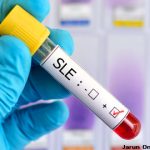Dr. Arnaud cited an observational study from Ruiz-Irastorza et al. that evaluated more than 230 patients with SLE, assessing prolonged remission during five consecutive yearly visits. The authors found that methylprednisolone pulses administered in doses of 125 mg, 250 mg or—in severe cases—500 mg daily for three consecutive days to patients with SLE during the first year of disease were associated with a higher frequency of prolonged remission. This effect was mainly observed in patients with moderate to severe disease activity. Additionally, the use of such pulses was associated with reduced doses of prednisone given to patients with a baseline Systemic Lupus Erythematosus Disease Activity Index 2000 (SLEDAI-2000) score ≥6.8
More work needs to be done on this subject, but Dr. Arnaud indicated that these results—if reproducible—may support the intermittent use of pulse therapy over the prolonged use of oral glucocorticoids.
In Sum
Dr. Arnaud covered a tremendous amount of ground in 30 minutes. As we look to the horizon, it’s clear that many exciting innovations lay ahead to help patients with SLE achieve healthier and longer lives.
Jason Liebowitz, MD, is an assistant professor of medicine in the Division of Rheumatology at Columbia University Vagelos College of Physicians and Surgeons, New York.
References
- Weissmann, G. Queen Anne’s lupus: Phospholipids and the course of the Empire. FASEB J. 2014 Apr;28(4):1527–1530.
- Tian J, Zhang D, Yao X, et al. Global epidemiology of systemic lupus erythematosus: a comprehensive systematic analysis and modelling study. Ann Rheum Dis. 2023 Mar;82(3):351–356.
- Moe SR, Haukeland H, Brunborg C, et al. Persisting mortality gap in systemic lupus erythematosus; a population-based study on juvenile- and adult-onset SLE in Norway 1999–2022. Rheumatology (Oxford). 2023 Sep 28:kead519.
- Reid S, Alexsson A, Frodlund M, et al. High genetic risk score is associated with early disease onset, damage accrual and decreased survival in systemic lupus erythematosus. Ann Rheum Dis. 2020 Mar;79(3):363–369.
- Adamichou C, Genitsaridi I, Nikolopoulos D, et al. Lupus or not? SLE Risk Probability Index (SLERPI): A simple, clinician-friendly machine learning-based model to assist the diagnosis of systemic lupus erythematosus. Ann Rheum Dis. 2021 Jun;80(6):758–766.
- Parra Sánchez AR, van Vollenhoven RF, Morand EF, et al. Targeting DORIS remission and LLDAS in SLE: A review. Rheumatol Ther. 2023 Dec;10(6):1459–1477.
- Franklyn K, Lau CS, Navarra SV, et al. Definition and initial validation of a Lupus Low Disease Activity State (LLDAS). Ann Rheum Dis. 2016 Sep;75(9):1615–1621.
- Ruiz-Irastorza G, Paredes-Ruiz D, Herrero-Galvan M, et al. Methylprednisolone pulses and prolonged remission in systemic lupus erythematosus: A propensity score analysis of the longitudinal Lupus-Cruces-Bordeaux inception cohort. Arthritis Care Res (Hoboken). 2024 Mar 26. Online ahead of print.

